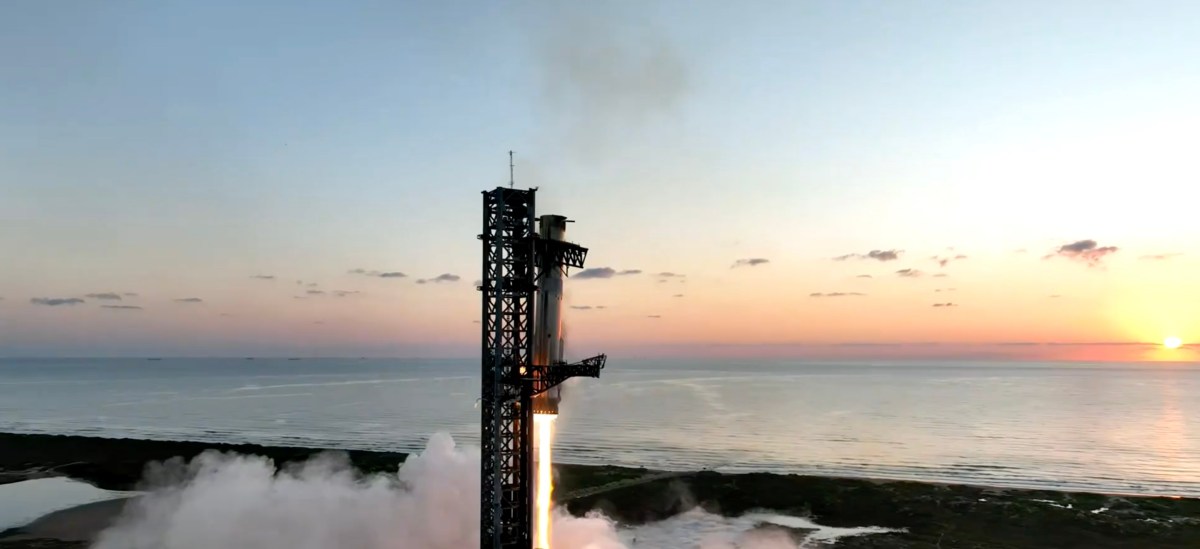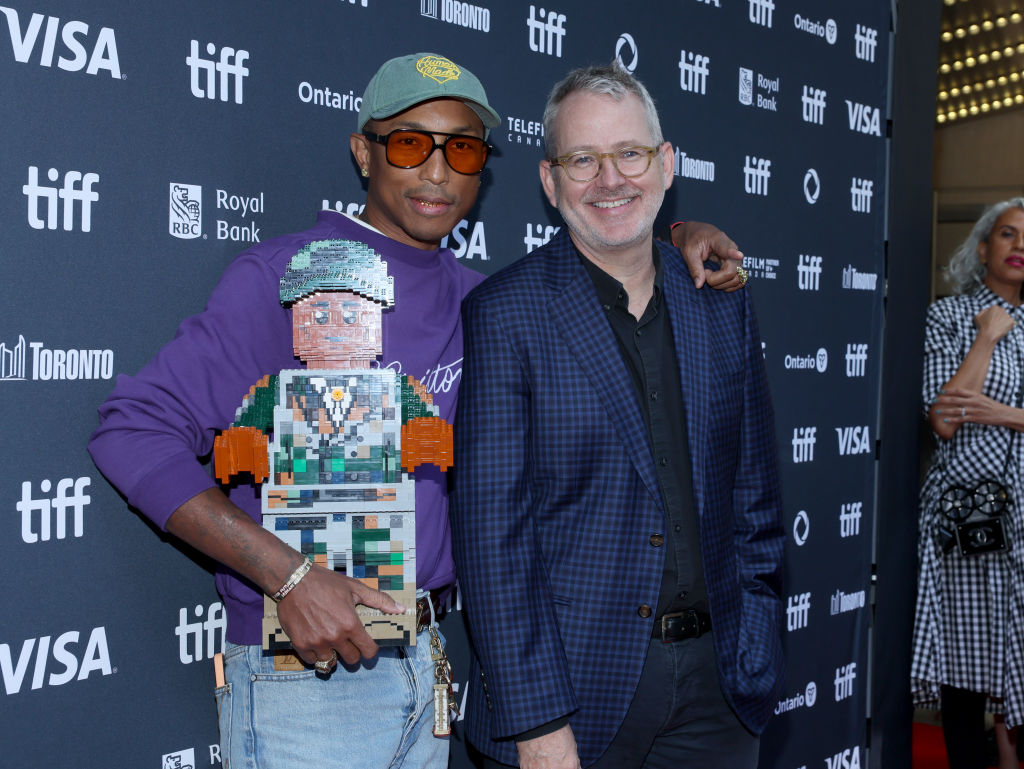Tech
Apple might release a $2,000 Vision headset next year

Apple’s Vision Pro hasn’t exactly reshaped the market, but the company isn’t giving up on headsets that combine the digital and real worlds.
A new report from Bloomberg’s Mark Gurman says that Apple’s next big mixed reality release could come as early as next year, with the launch of a Vision headset costing around $2,000 — not exactly cheap, but more affordable than the $3,500 Vision Pro. To achieve this price, Apple would use cheaper materials and a less powerful processor, and it would not include the EyeSight feature that shows a user’s eyes outside the headset.
Next up would be a second-generation Vision Pro in 2026, and then potentially smart glasses (akin to Meta’s Ray-Bans) and AirPods with cameras in 2027.
The same report offers an update on Apple’s smart home strategy. The company hasn’t had much success here, either, but there are reportedly plans for an “an affordable iPad-like screen” that could be placed around the house to watch TV, make FaceTime calls, and use apps. This would be followed by a tabletop device with a robot arm, which could cost around $1,000.
Tech
SpaceX successfully catches returning Starship booster

For the first time, SpaceX not only launched its mammoth Starship, but also returned the booster to the launch site and to caught it with a pair of oversized “chopsticks.”
This test flight — the fifth in the Starship development program — took place Sunday morning at the company’s Starbase site in southeast Texas. The nearly 400-foot-tall Starship is at the centerpiece of SpaceX’s stated ambition to make life multi-planetary, but more immediately NASA’s ambitious Artemis campaign to return humans to the surface of the moon.
SpaceX envisions rapid reuse of the entire Starship vehicle, which includes an upper stage (also called Starship) and a Super Heavy booster — but that means proving out the capability to recover both stages and quickly refurbish them for future flights.
So it makes sense that the primary objectives for this fifth flight test were two-fold: attempting the first-ever “catch” of the Super Heavy booster at the launch site and an on-target Starship reentry and splashdown in the Indian Ocean.
The latter goal had already been achieved: SpaceX nailed a controlled reentry and splashdown of the Starship upper stage during the last test mission in June. But the booster catch, as the company put it in a blog post, would be “singularly novel” in the history of rocketry.
The closest analogue is the now-routine Falcon 9 booster landings on autonomous barges and terrestrial landing zones. In today’s launch, the booster slowed to a hover and gently positioned itself inside the zone of two “chopstick” arms attached to the launch tower. Those arms then closed around the booster and hold it up after its engines stop firing.
You can see the catch at around 40 minutes into SpaceX’s video of the test. Following the booster detachment and catch, Starship continued to ascend into orbit before splashing in the Indian Ocean and exploding (SpaceX had not planned to recover the spacecraft).
SpaceX noted in an update posted on its website that “thousands” of criteria showing healthy systems across the vehicle and pad had to be met for the catch attempt to occur. This test also took place a little sooner than expected: the Federal Aviation Administration had previously said that it did not anticipate issuing a modified launch license for this test before late November.
That timeline gave much umbrage to SpaceX, leading the company to repeatedly call out what it characterized as the regulator’s inefficiency. But the FAA announced on Saturday that it had approved the launch.
“The FAA determined SpaceX met all safety, environmental and other licensing requirements for the suborbital test flight,” the regulator said in a statement. Notably, the authorization also includes approval for the next test flight, given that “the changes requested by SpaceX for Flight 6 are within the scope of what has been previously analyazed,” the FAA said.
While awaiting this launch license, SpaceX engineers have stayed very busy: in recent months, they have conducted numerous tests on the launch tower, completely replaced the rocket’s entire thermal protection system with newer tiles and a backup ablative layer, and updated the ship’s software for reentry. This week, engineers completed propellant loading tests and testing of the launch pad’s water deluge system, which is meant to protect the pad from the powerful fire of the booster’s 33 Raptor engines.
The company eventually plans on bringing the Starship upper stage back to the landing site too, though we’ll have to wait to see that in future test launches.
“With each flight building on the learnings from the last, testing improvements in hardware and operations across every facet of Starship, we’re on the verge of demonstrating techniques fundamental to Starship’s fully and rapidly reusable design,” the company says. “By continuing to push our hardware in a flight environment, and doing so as safely and frequently as possible, we’ll rapidly bring Starship online and revolutionize humanity’s ability to access space.”
Anthony Ha contributed to this report, which has been updated to reflect the successful test flight.
Tech
Director Morgan Neville is steering clear of generative AI after ‘Roadrunner’ backlash

One of the most attention-grabbing aspects of “Roadrunner,” the Morgan Neville-directed documentary about Anthony Bourdain, was Neville’s use of generative AI to replicate Bourdain’s voice.
Looking back now, Neville told Wired that he saw this as a “fun” way to “keep [Bourdain’s] voice going in the film.” But his approach drew intense criticism — while the synthetic Bourdain only read words that the real Bourdain had actually written, Neville said many viewers assumed, “Oh, they just made [expletive] up.”
“Many people told me that there were other documentary projects that were doing the same thing, that all reacted; they either changed what they were doing or put giant disclaimers over everything,” he said.
Since then, the director has “assiduously avoided” using AI. Even in his new documentary “Piece by Piece,” in which he dramatizes musician Pharrell’s life with Legos (yes, really), Neville was careful to steer clear.
“Carl Sagan in [Piece by Piece] says, ‘Pharrell’ and I was very clear to everybody that we were, with permission of his widow, going to make him say ‘Pharrell’ without using AI,” Neville said. “We actually experimented to construct the word from syllables [he actually said].”
Tech
The original source code for Backyard Baseball is long gone. Mega Cat Studios remastered the game anyway.

Backyard Baseball 1997 is back in all of its nostalgic glory, sliding onto Steam like Pablo Sanchez when he steals a base. But before Mega Cat Studios could remaster the cult favorite PC game, founder James Deighan had to sift through almost thirty years of detritus.
Playground Productions, a children’s media company, scored the rights to the Backyard Sports games, which were originally put out by Humongous Entertainment for Windows PCs. But the now-defunct video game developer didn’t do a great job at archiving its software when it was bought, sold, and dismantled for parts during the 2000s.
“[Playground] sent us this massive box of Zip disks and files and CD ROMs and just all sorts of things from over the years,” Deighan told TechCrunch. He sifted through the materials with Luke Usher, an engineer who specializes in emulators (programs that allow computers or other devices to imitate video game consoles, like an iPhone app that lets you play Pokémon). But Usher and Deighan discovered a key problem.
“I noticed that the source code was missing for the games that we were trying to work with,” Usher told TechCrunch. “So we got a hold of a copy of the disc of Baseball ‘97, then started from there, and then it became apparent that we’d need to modify the game to get it to run nicely on modern systems. So I started searching the web to see if anybody had worked with that game before.”
That’s how they met John Simon, an engineer who had been modding the Backyard Sports games for fun.
“It’s just something I do from time to time when I really like a game. I play the game, I beat the game, and you know, the replay value is gone, but I haven’t had enough,” Simon told TechCrunch. “So what do you do? For me as a programmer, as a reverse engineer, it’s fun to just go in and dig into the source and see if there are any developer secrets left behind, or incomplete content, the kind stuff you see on the cutting room floor.”

When Deighan leads projects like this, where a retro game is being brought back to life, he tries to hire from within the fan communities of those games.
“One of the first things we do is we extend the Mega Cat team with people that have already been living in that space for some number of years,” Deighan said. This was also true of a project Mega Cat worked on with NES Mike Tyson games. “So as an example, when we worked on Mike Tyson [i.e. Punch-Out! for NES], we were working closely with Mike Tyson ROM hackers, and speedrunners, and people that know every single corner of it, because they often end up being not only 20 times more passionate, but much more knowledgeable.”
Simon’s expertise with the Backyard Sports franchise proved especially useful, since it’s built within SCUMM, an obsolete game engine that LucasArts released in 1987.
“There might be maybe two dozen people globally that are actively contributing to or working in [SCUMM],” Deighan said. “It’s very much like a legacy artifact from a previous era.”
Even at the time of Backyard Baseball’s original release, SCUMM was already phasing out of use.
“Somehow, the Humongous developers back in the 90s, they built a 3D game inside of this 2D game engine,” Simon said. “Somehow they turned it into a sports game – it’s kind of an insane achievement, especially back in 1997.”
Simon was able to modify assets and scripts from Backyard Baseball using ScummVM, an open source interpreter of the game engine (the programmer behind the 2001 software, Ludvig Strigeus, went on to become one of Spotify’s first developers). But Mega Cat still had the problem of getting the retooled Backyard Baseball to run on modern devices. That was Usher’s job.
“That involved basically building a framework that can hijack the game when you try to run it, take over the control, and then run our own code before the game code starts, and use it as an opportunity to apply patches, make changes, fix bugs, hook into Steam, that kind of thing,” he said. “So the game doesn’t really know it’s been modified, but we jump in before it has a chance to start.”

Although Mega Cat’s team spent a lot of time in the weeds on the kinds of niche issues that crop up with retro gaming, they didn’t lose sight of the joy of bringing Backyard Baseball back to life. The game has such an enduring fanbase that even the Kelce brothers looked into buying the rights.
“Some of us were doing these things for free for 10 years, so it’s kind of a dream type of project to be a part of,” Deighan said. “It’s such a fun sleeper hit for fandom, for people to kind of hit that nostalgia button and go back in time.”
The tension with Backyard Baseball, though, is that most of its fans, who played the game when they were young, are now in their 20s and 30s. So, a game with a difficulty level geared toward children using computers for the first time might be too easy. But Mega Cat and Playground decided to keep the game true to its original version, instead adding in Steam achievements for players who want an extra challenge.
“We very much believe in preservation,” Deighan said. “Our emphasis was more around, what can we do that allows that digital preservation to stand alone, while also having all these other replayability and collaborative features added in?”
Now, Backyard Baseball 1997 is available on Steam, but Mega Cat’s work isn’t done. With Playground Productions, they will also be remastering Backyard Soccer ‘98, Backyard Football ‘99, Backyard Basketball ‘01, Backyard Baseball ‘01, and Backyard Hockey ‘02.
“The fans have been showing up like crazy,” Deighan said. “It’s easy to stay excited.”





